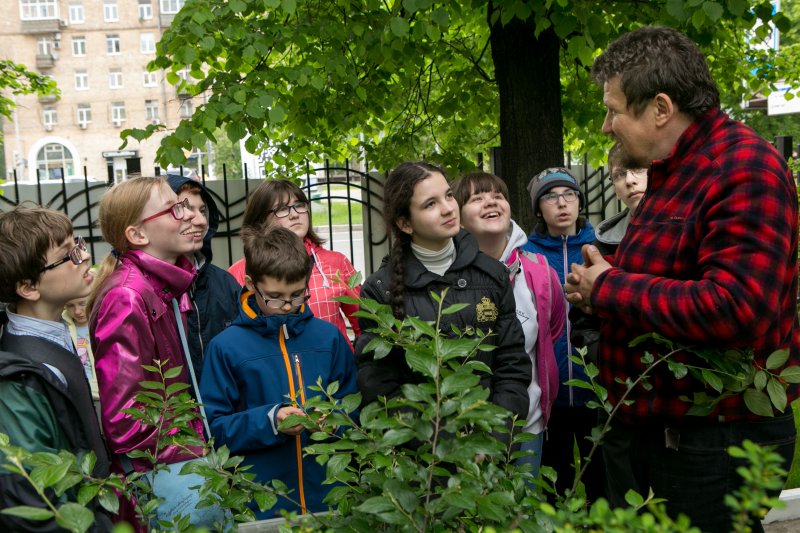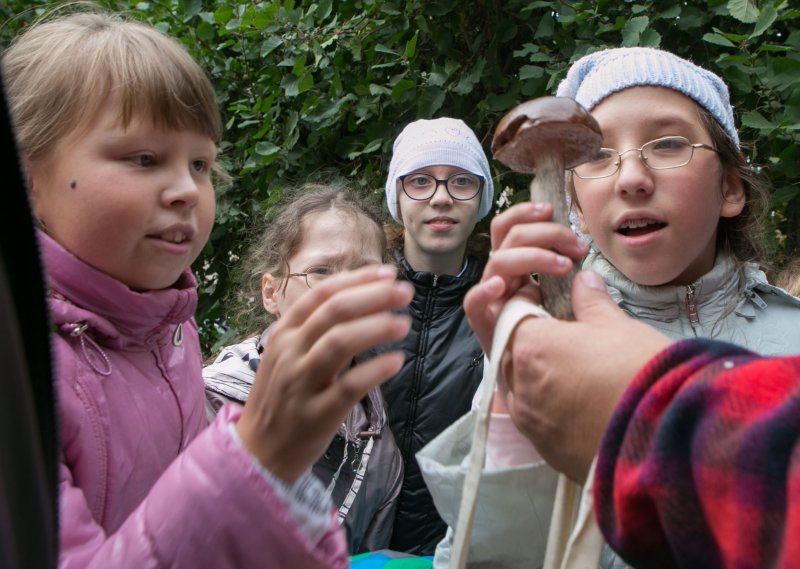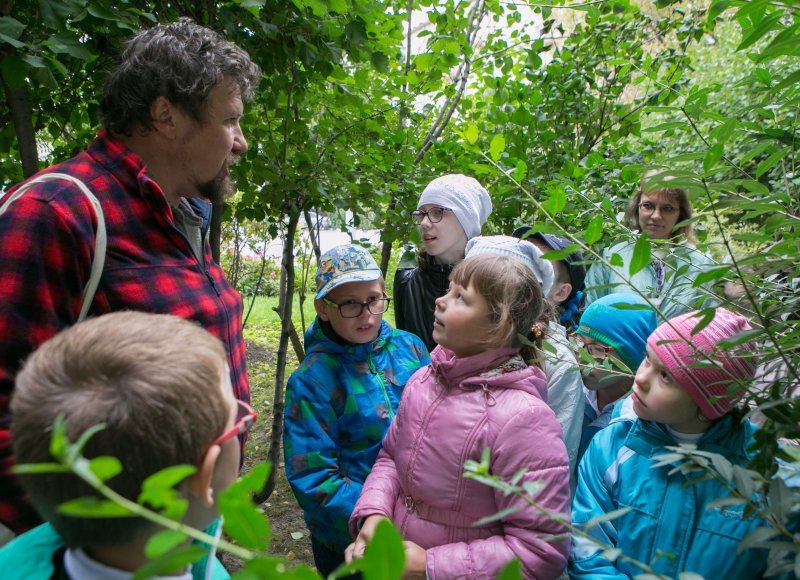ENVIRONMENTAL PATH
The ENVIRONMENTAL PATH exists since 2007. Today it is a green area of 1800 sq. m. – home for a living collection of woody and herbaceous plants.
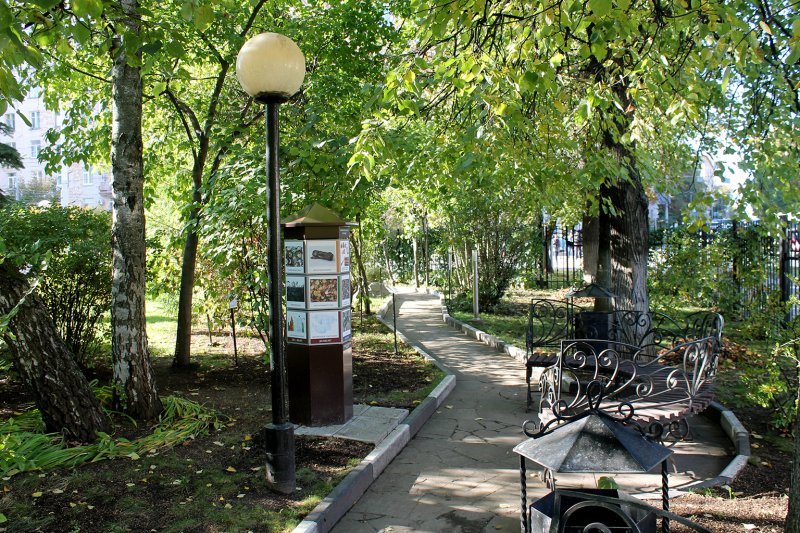
Recreation area
The collection of plants comprises 75 species of trees and shrubs and 66 species of perennial herbaceous plants. Here you can learn more about plants that are our neighbors in big cities. Read interesting facts about the plants on the labels, which are also duplicated in Braille. Get a chance to see over 40 species of birds and about 100 of invertebrates.
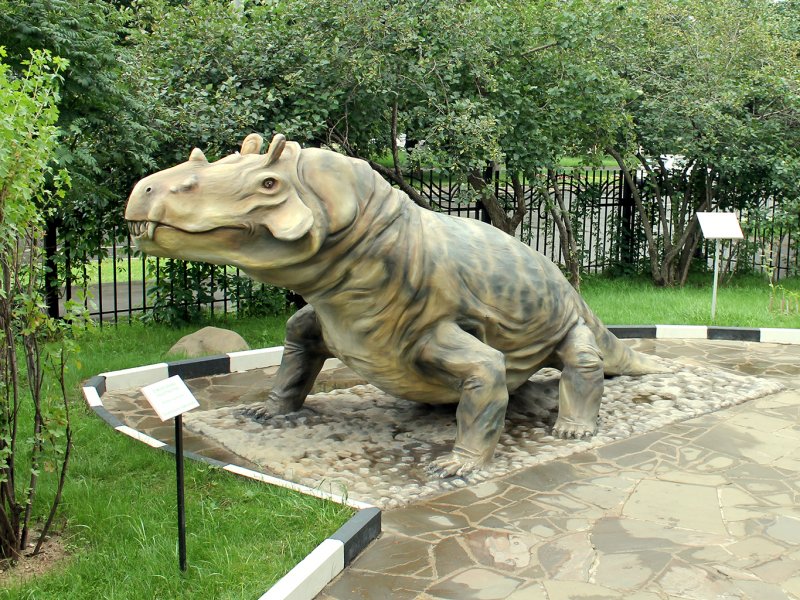
Estemmenosuchus
PALEOPARK is a part of the Environmental path, displaying the life-size sculptures of prehistoric animals who used to inhabit the territory of modern Russia. Here you can also find representatives of the most ancient plants, such as Ginkgo, Tsuga and Pseudotsuga. The dinosaurs’ contemporaries – the Ginkgo genus first appeared 250 million years ago and comprised a variety of species, which were great in number.
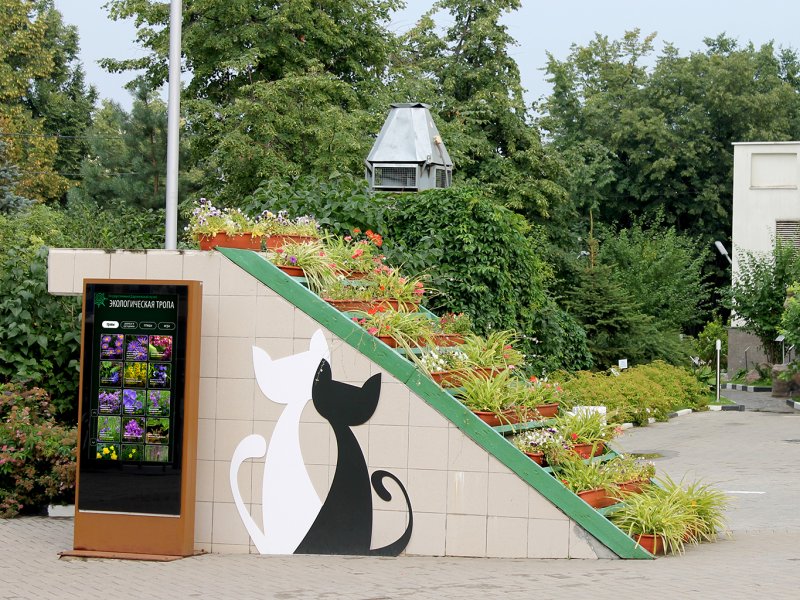
Information kiosk
An Information kiosk is available to visitors at the Environmental path. It has informative interactive programs and games, three of which are about birds that can be met at the Environmental path. Visitors can also try the interactive stands, which can help you learn about the birds that nest in this region and when in a form of riddles.
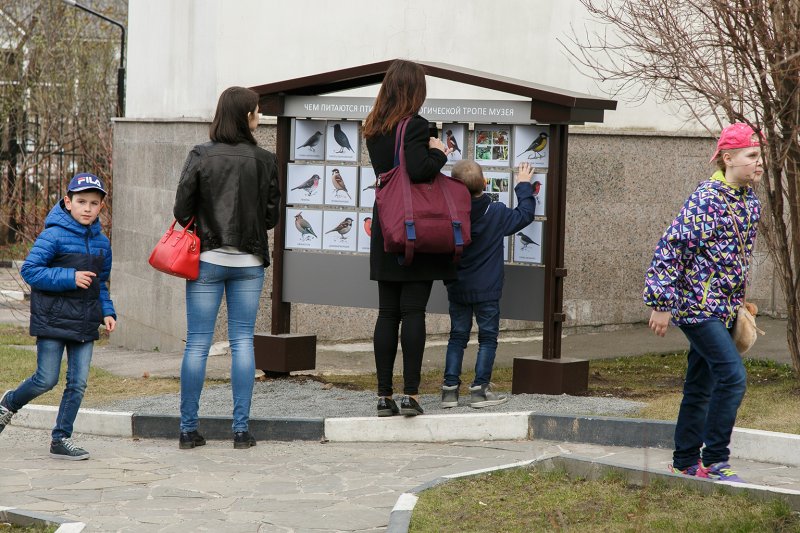
What do birds eat?
Find out what food do different species of birds prefer by turning the parts of an interactive stand. Most of the food can be found along the path. Other interactive stands show plants, the type of leaves and flowers/fruits they have.
One of the important topics we couldn’t miss is environment protection: waste. We designed stands to show how long it takes for different types of waste to decompose.
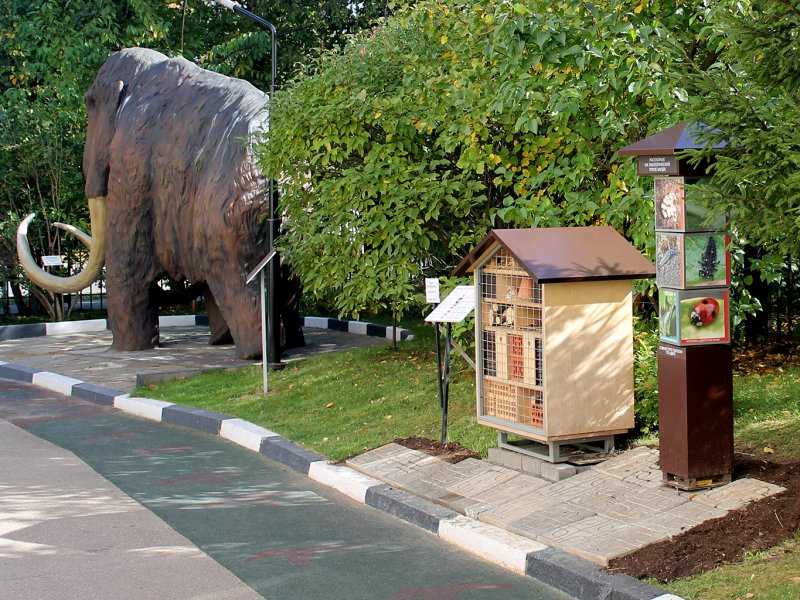
Insects winter house
We have taken care of numerous insects pollinating plants at the Environmental path, together with those hunting vermin. The house is built with regard to the preferences of solitary bees and wasps, green lacewings, ladybugs/ladybirds, bumblebees and others. The information stand nearby will show different stages of these insects’ growth and development.
You can always walk the Environmental path independently or book a guided tour.
